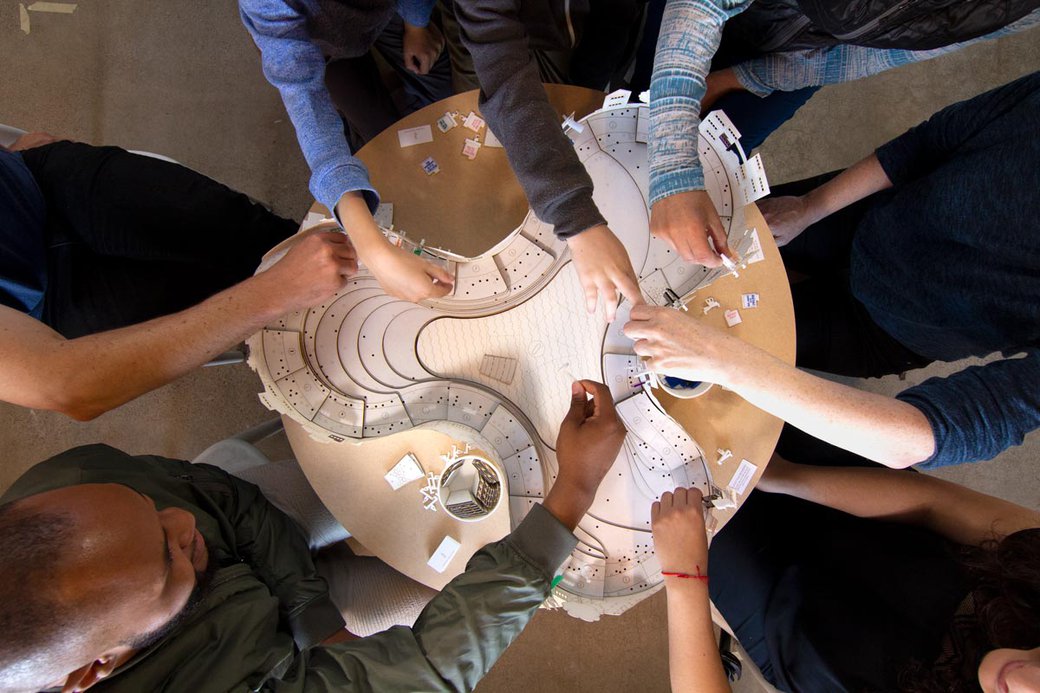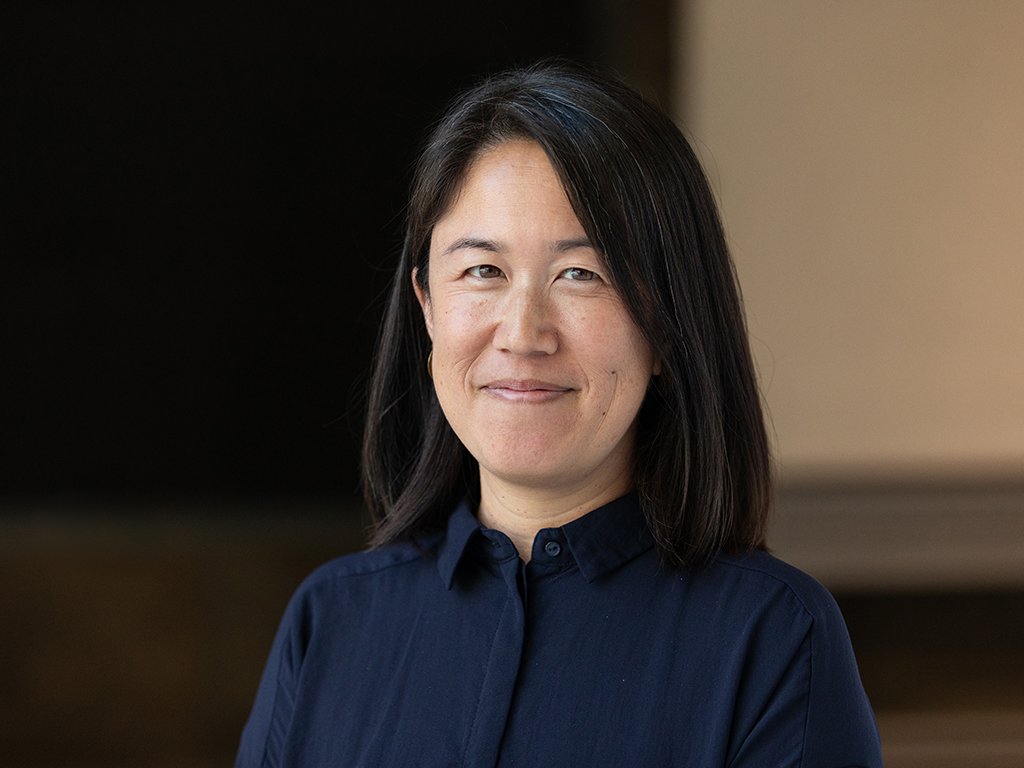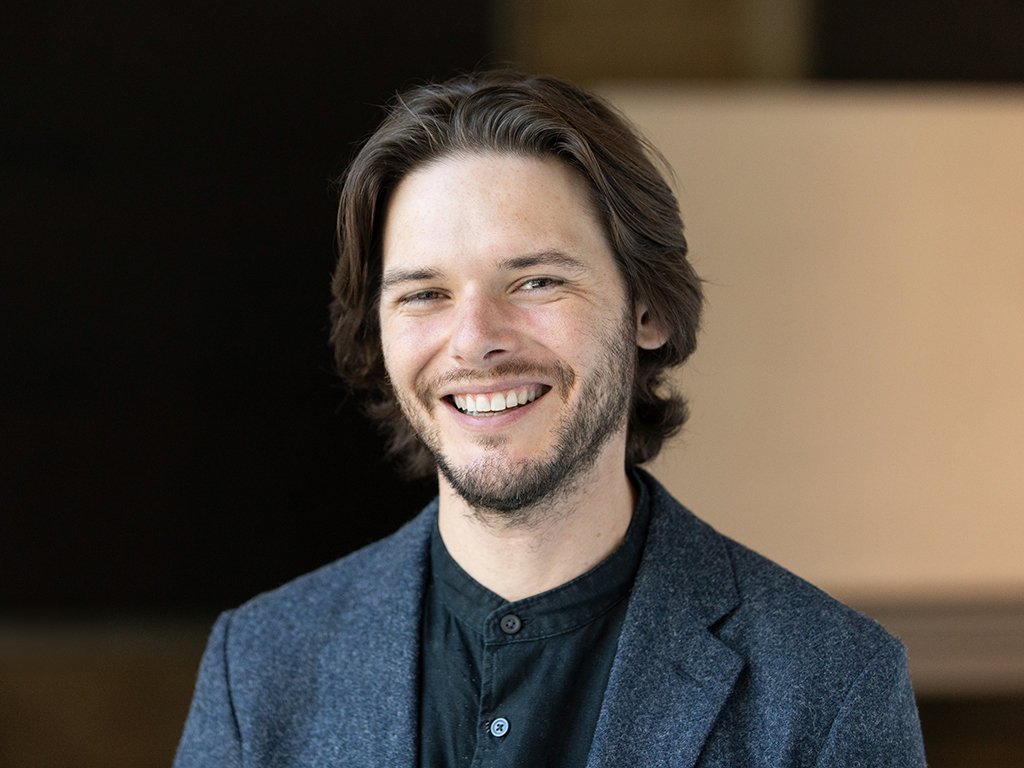
MAADMaster of Advanced Architectural Design
Overview
Specialize in emerging architectural fields

Study in the inspiring Bay Area
The San Francisco Bay Area is home to spectacular architecture, renowned museums, and innovative technology companies. Within a one-mile radius of campus, you’ll find Adobe, Autodesk, IDEO, Frog Design, Google AI, Redwood Robotics, and many other research and development groups. We’re also near the CCA Wattis Institute for Contemporary Arts, Minnesota Street Project, and numerous alternative art spaces that blur the lines between craft and digital design. You’ll forge lifelong connections with intellectuals, researchers, and practitioners who work across multiple disciplines.
Studios & Shops
Expand the boundaries of material and form
Each MAAD concentration is connected to a unique research and project-based platform. It’s through our research labs that we translate our ideas about alternative futures into prototypes and solutions for the real world.

The Digital Craft Lab features experimental making through emerging technologies, teaching you about advanced computation, robotics, responsive environments, rapid prototyping, and more.

The Urban Works Agency responds to the politics of the contemporary city. Equity, ecological vitality, and economic resilience are reimagined through urban and territory scaled analysis, narratives, and arguments.

History Theory Experiments (HTX) is a platform for advanced interdisciplinary research and critical engagement in architecture that explores alternative modes of historical practice, discourse, and spatial activism.
Collaborate with outside partners
Many of your studios and seminars incorporate outside partners, from scientists and engineers to historians and nonprofit organizations. You’ll approach some of the most pressing issues of our time, such as climate change, gentrification, and urban density, with full-scale, collaborative solutions. Recent partnerships include the City of San Francisco, Autodesk, Google, and Resilient by Design.
Summer studios and study-abroad courses
Each summer, the architecture programs host a 333 Studio, which invites three outside critics to work with students for three weeks in a lab-like environment. From civil engineers to urban planners, you’ll meet leaders who specialize in a range of methods and materials.
We also encourage every student to study abroad during the summer semester. Recent courses have focused on the reimagining of urban sites and extra-large buildings in Berlin and the architectural experimentation of domestic spaces in Tokyo.
Your tools for material experimentation
- KUKA robotic arm in the Digital Craft Lab
- 3D printers in the Hybrid Lab
- Digital preservation tools
- Lathes, grinders, and sanders
- Milling machines
- CNC routers and laser cutters
Faculty
World-class researchers, designers, and architects
Our high-profile, dedicated faculty believe that architecture and interior design are critical cultural practices. They research and write about a range of topics and experiment with alternative materials and processes. Their primary pedagogical tools—hands-on lab work and research—guide students throughout studio and seminar investigations, from experiments in collective living to the construction of ecologically resilient structures.

Irene Cheng, Chair of Graduate Architecture
Irene Cheng is an architectural historian, critic, and educator whose work explores the relationship of architecture to culture, politics, and society. Recent books include The Shape of Utopia: The Architecture of Radical Reform in Nineteenth-Century America, Race and Modern Architecture: A Critical History from the Enlightenment to the Present, and The State of Architecture at the Beginning of the 21st Century. Cheng is also a founding principal of Cheng+Snyder, a multidisciplinary design practice that seeks to instigate critical debates about architecture, politics, and the city.

Alex Schofield, Associate Chair of Graduate Architecture
Associate Chair Alex Schofield is an Oakland-based designer focused on the impacts of emerging technologies and material innovation on the built environment. A graduate of the University of California at Berkeley, Schofield has worked as a researcher at Berkeley’s printFARM (Print Facility for Architecture, Research, and Materials) and with the materials and technology-based design firm Emerging Objects. He has completed residencies at both Autodesk Pier 9 and Workshop Residence, and has lectured and exhibited his work abroad. Alex operates through his design workshop, Objects and Ideograms, which explores spatial making with an emphasis on materiality and ecology.
Faculty stories

CCA Architecture professor Neeraj Bhatia imagines a new kind of communal living
In this Q and A, Bhatia discusses their project "The Center Won't Hold: Decentering the Commune into Networks of Care" for the 2021 Chicago Architecture Biennial, The Available City.

Five CCA Architecture faculty share proposals for an iconic, new landmark
Discussing their entries to the 2021 Urban Confluence competition, Architecture faculty explain the theory and practice behind their visions for an inspired new monument in San Jose.

Navigating the workplace as a women or non-binary architect
Graduating CCA MArch students outline four pieces of important advice they learned from their Architecture faculty mentors on navigating gendered culture in the workplace.
Concentrations
Tailor your degree experience
Focus on your research and design priorities
You must complete 30 units over the course of two semesters. Each semester, you’ll take one advanced studio, two topic electives in your chosen concentration, and one open elective, which can be any course within the main Architecture division or across the college. Take open electives in visual critical studies, interaction design, interior design, sculpture, and other disciplines. MAAD-HTX students take two additional electives each semester in place of an Advanced Studio. View sample courses.
Year 1: Fall semester (15 units total)
- Advanced Studio or Independent Study (6 units)
- Two Topic Electives (6 units)
- Open Elective (3 units)
Year 1: Spring semester (15 units total)
- Advanced Studio or Independent Study (6 units)
- MAAD Pro Seminar (3 units)
- Topic Elective (3 units)
- Open Elective (3 units)

Floating Housing Prototype in the Maldives by Jingyi Luo and Cera Yeo.
Architectural Ecologies
The MAAD Architectural Ecologies concentration offers advanced training at the nexus of architecture, fabrication, and ecology. Leveraging CCA’s strengths in ecological research, building technology, and digital fabrication, the program explores how architects organize matter and energy toward the production of meaningful environments that can help mitigate and adapt to climate change.

Digital Craft
The MAAD Digital Craft concentration focuses on contemporary digital design technologies and digital craft. You’ll get both broad and in-depth exposure to contemporary topics such as parametric design, advanced computation, digital fabrication, robotic techniques, and building information modeling. During your first semester, you’ll develop a specific research trajectory. You’ll integrate digital design concepts with fabrication and prototyping tools in your second semester to realize a full-scale project.

Urban Works
The MAAD Urban Works concentration focuses on architecture and urbanism. You’ll learn how to leverage architectural design and form to impact social justice, ecological vitality, and economic resilience within communities. You’ll advance novel strategies of research, design, and scholarship to model new forms of practice and develop innovative solutions to urban challenges.

Lebbeus Woods drawings and models on view at SFMOMA. Photo by Matthew Millman.
History Theory Experiments
The MAAD History Theory Experiments (HTX) concentration offers an intense year of advanced study in architectural and urban history, theory, and criticism, culminating in an independent research project. You’ll explore politically engaged forms of spatial activism, historical research methods, architectural writing, and more. During your first semester, you’ll take a required course in architectural theory, advanced seminars in research and interpretation, along with an open elective. You’ll complete an independent thesis project in your second semester, guided by a faculty mentor and an optional external advisor.
Careers
Thrive in an ever-changing architectural landscape
Our students enter the program as early- to mid-career professionals and graduate as highly collaborative and experimental design leaders. Many stay in the Bay Area, working for leading design practices or for technology companies like Google and Airbnb, while others take their knowledge back home as leaders in their profession. Their year of immersive research and material exploration helps them make a positive impact at any scale, from workplaces and parklets to municipal agencies and vast urban territories.
Career success stories

Kimia Farahnak (MAAD Advanced Architectural Design 2023)
Kimia Farahnak (MAAD Advanced Architectural Design 2023)
Two award-winning CCA projects at the intersection of design, architecture, and biotechnology envision a sustainable future.

Joseph Becker (MAAD Advanced Architectural Design 2014)
Joseph Becker (MAAD Advanced Architectural Design 2014)

Sitou Akolly (MAAD Advanced Architectural Design 2016)
Sitou Akolly (MAAD Advanced Architectural Design 2016)
Sitou Akolly (MAAD Advanced Architectural Design 2016) shares why he came to CCA and his interest in pre-colonial architecture of Togo.
News & Events
What’s happening in our community?
A newly donated robot opens up possibilities for architecture and design

Architecture faculty Clark Thenhaus on the history behind San Francisco’s colorful homes
Clark Thenhaus offers insight into the history of the city’s iconic Victorian homes in a story spotlighting Bob Buckter, aka Dr. Color.

Leviathan by Architecture faculty brings parametric design to life
On view through November 30, Leviathan by Architecture faculty members Jason Kelly Johnson and Nataly Gattegno activates San Francisco’s Moscone Center. The installation reflects on power structures, climate change, and human nature.

Architecture students turn plants and organic waste into building materials
Bioengineers and CCA architecture students research the potential to create sustainable, net-zero buildings by transforming organic waste, such as eggshells, into building materials.
How to Apply
Gather materials to build your application
The Master of Advanced Architectural Design is a one-year, two-semester post-professional degree program. Applicants must have a bachelor’s degree in architecture. Overall, admission is based on the strength of your portfolio and transcripts.
Start your application
You’ll apply to CCA and submit all required application materials via SlideRoom. Afterward, you may be contacted for an interview with a faculty member as part of the application process. Being selected for an interview doesn’t indicate applicant status or increase or decrease an applicant’s chances of being admitted into their desired graduate program. Interviews are conducted at the program’s discretion and are used to gain more insight into an application.
MAAD application requirements
- Application and $70 nonrefundable application fee
To be completed and submitted on SlideRoom. - Resume/curriculum vitae
Please outline your educational and professional background and relevant experiences and activities, including community work. Resumes/CVs must be in PDF document format. - Two recommendation letters
You’ll request two letters of recommendation from academic or professional sources in SlideRoom by entering the contact information for your recommenders/references. They will then receive an automated email from SlideRoom with instructions for uploading their letter of recommendation. - Unofficial college transcripts
You are required to provide your complete undergraduate academic history. Students who have already taken graduate courses are encouraged to submit those transcripts, too. For international applicants, all transcripts must be in English or accompanied by a certified English translation.
Please provide an unofficial transcript from the college where you will receive or have received your bachelor’s degree, as well as unofficial transcripts for all other undergraduate coursework. Unofficial transcripts will be used for review purposes.
Once you have been admitted and enrolled, all students will need to submit official, sealed transcripts showing the completion of a bachelor’s degree to our graduate admissions office by August 1 of the fall semester they begin enrollment at CCA. - Proof of English proficiency (international applicants only)
Review and plan to meet our English proficiency requirements for graduate students. - Portfolio
Your portfolio should provide clear evidence of your architectural education and demonstrate your level of ability. In addition to examples of academic and professional work, we encourage you to submit personal projects.
Assemble your portfolio into one PDF document no longer than 30 pages and no larger than 10 MB. You may provide links to relevant external materials (videos, websites, etc.) within the PDF. - Personal essay
In a personal essay, submitted as a PDF, write 500 to 1,000 words about what motivates you to pursue a degree in architecture and how this overlaps with one or more of our program’s strengths:- Integration of artistic, critical, and material approaches to architecture
- Alternative models of fabrication and practice
- Current investigations of culture, media, technology, and their relationship to architectural production
- Our location within a multidisciplinary art school in the vibrant San Francisco Bay Area
For prospective student inquiries, including questions about the program or how to apply, please contact us






